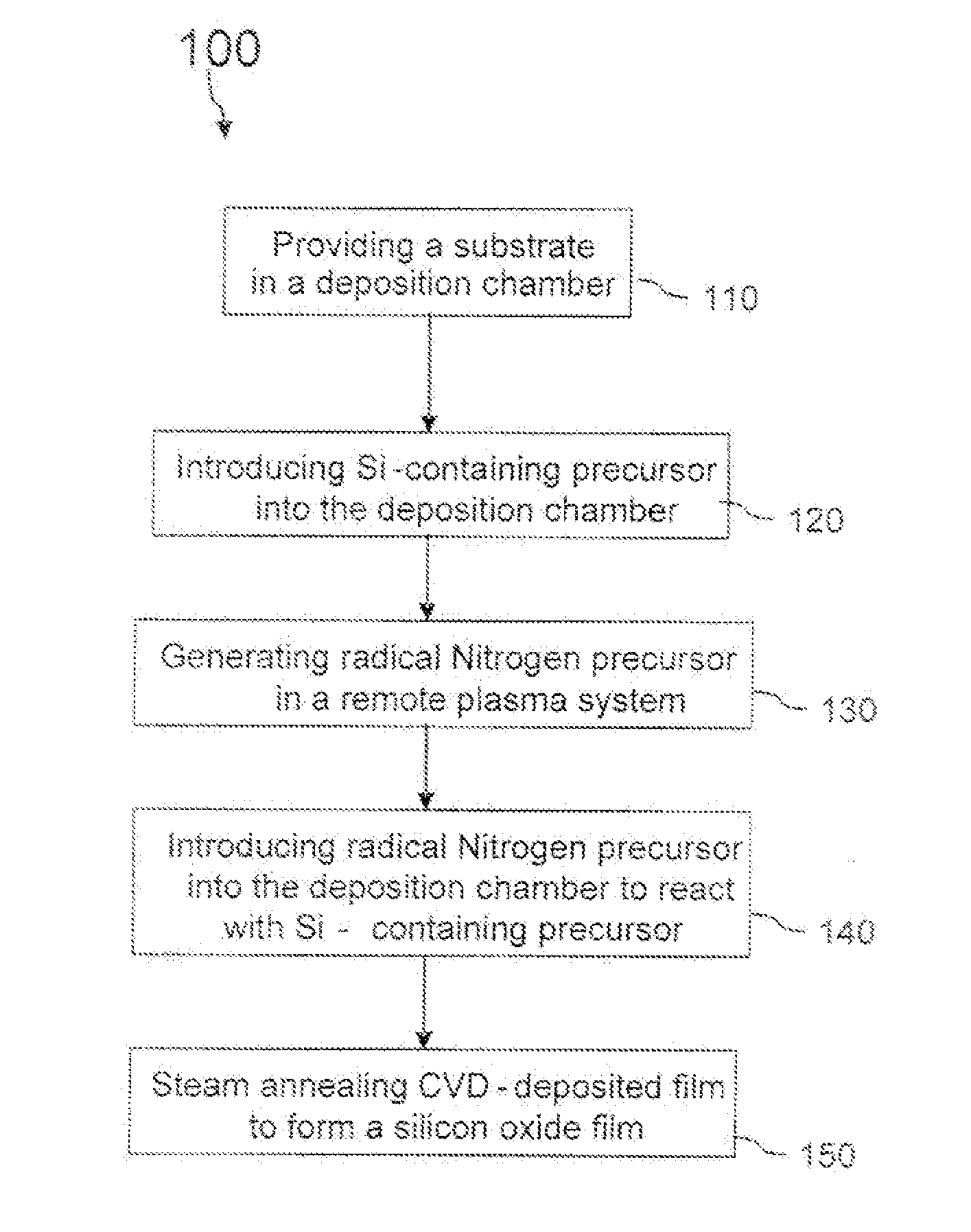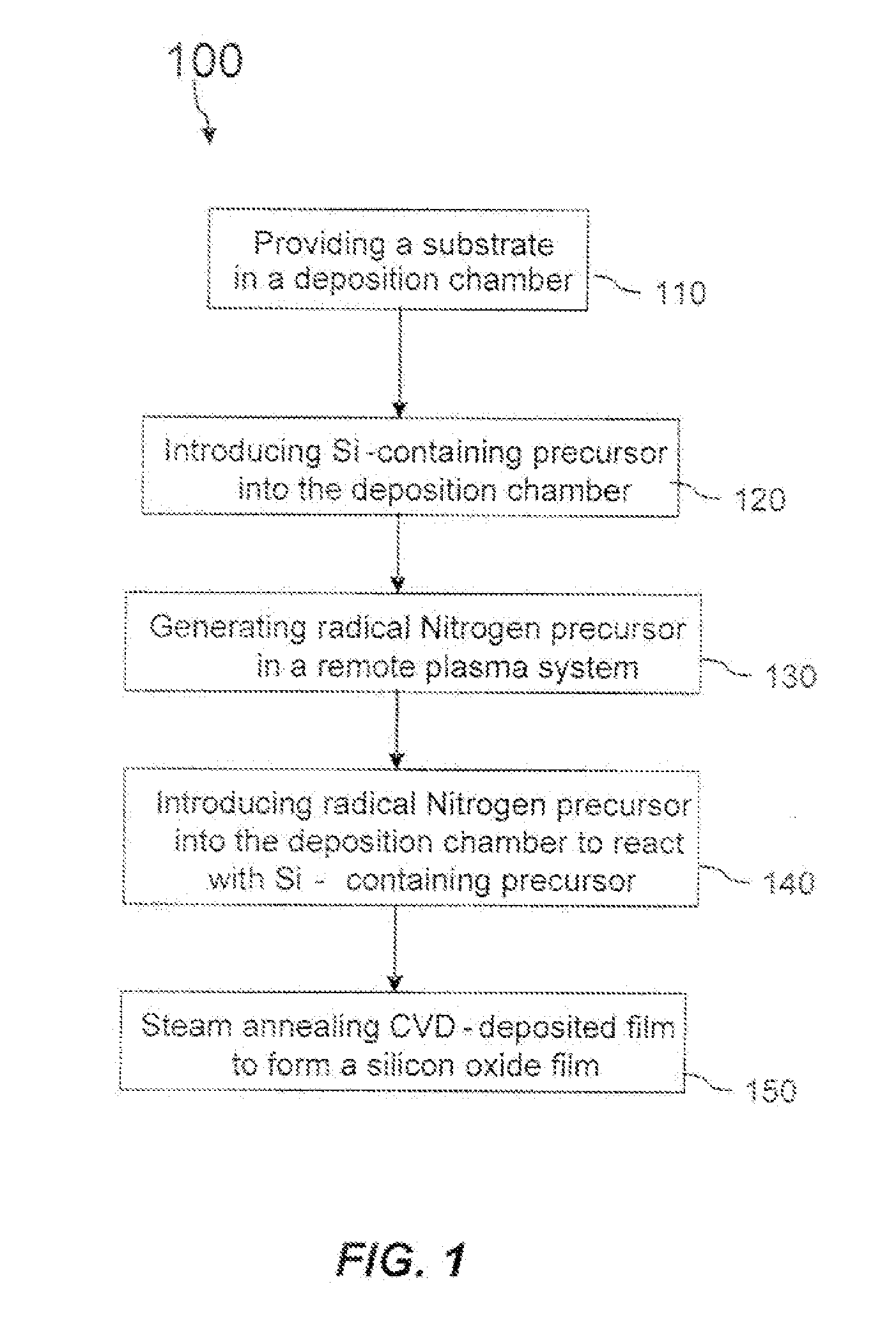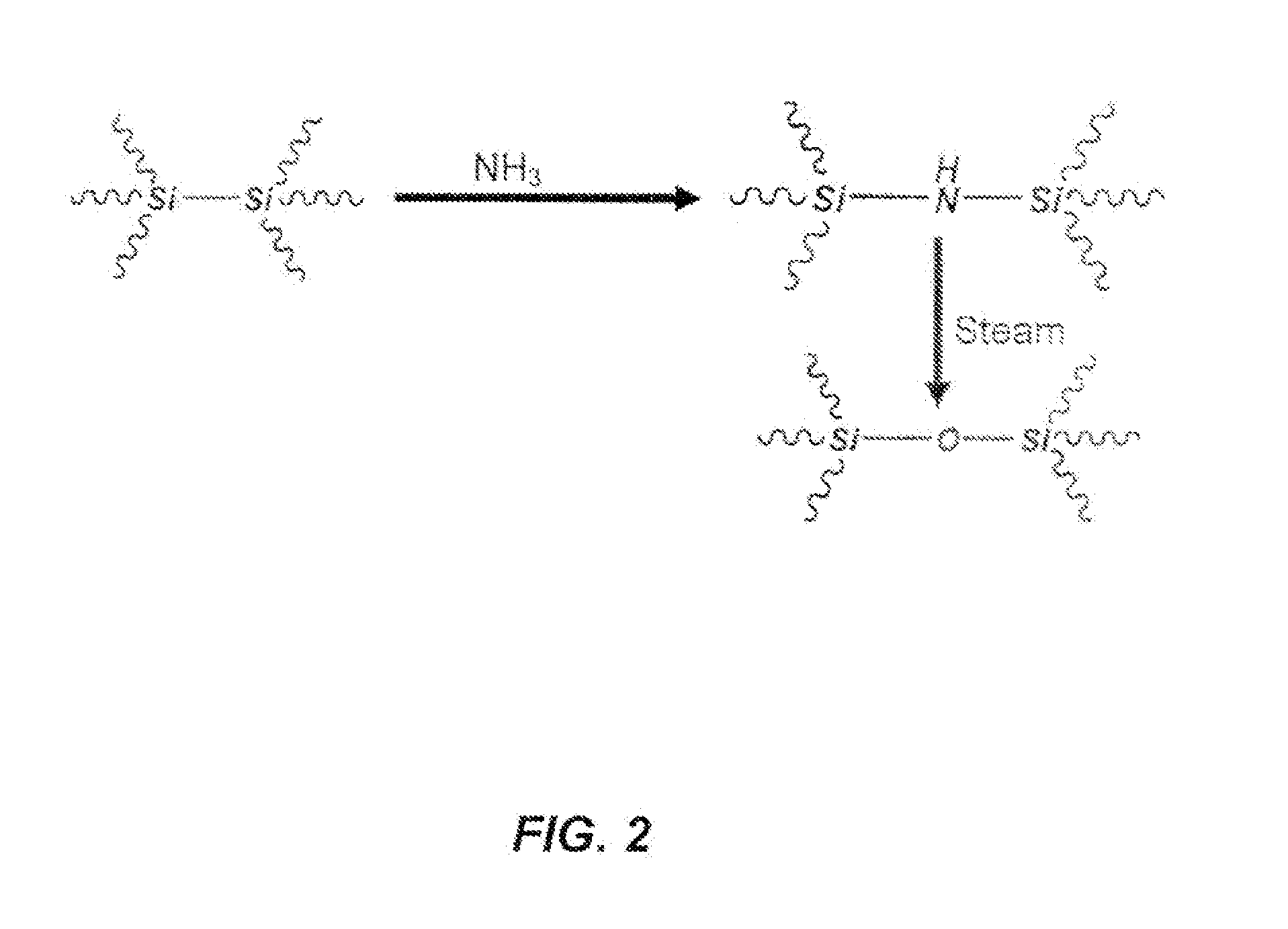Flowable films using alternative silicon precursors
- Summary
- Abstract
- Description
- Claims
- Application Information
AI Technical Summary
Benefits of technology
Problems solved by technology
Method used
Image
Examples
Embodiment Construction
[0019]Methods are described for forming dielectric materials such as silicon oxide, on a substrate as part of the manufacture of a semiconductor device. Embodiments include chemical vapor deposition methods of forming a flowable dielectric film that includes silicon and nitrogen (e.g., films with Si—N(H)—Si bonds) from the reaction of a silicon precursor with a radical nitrogen precursor (e.g., —N, —NH, —NH2) formed in a remote plasma. The methods may also include curing the flowable dielectric film to convert the silicon-and-nitrogen-containing material into silicon oxide materials with post-deposition annealing (e.g., steam annealing). Among other applications, the methods may be used to form high quality silicon oxide gapfills (e.g., the formation of STI structures).
[0020]The silicon precursor may include a carbon free precursor that has both silicon and nitrogen atoms. Some examples of silicon-and-nitrogen-containing precursors of this type include:
[0021]Additional silicon-and-n...
PUM
 Login to View More
Login to View More Abstract
Description
Claims
Application Information
 Login to View More
Login to View More - R&D
- Intellectual Property
- Life Sciences
- Materials
- Tech Scout
- Unparalleled Data Quality
- Higher Quality Content
- 60% Fewer Hallucinations
Browse by: Latest US Patents, China's latest patents, Technical Efficacy Thesaurus, Application Domain, Technology Topic, Popular Technical Reports.
© 2025 PatSnap. All rights reserved.Legal|Privacy policy|Modern Slavery Act Transparency Statement|Sitemap|About US| Contact US: help@patsnap.com



